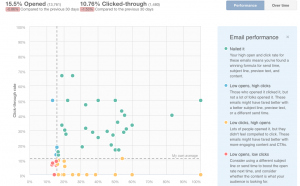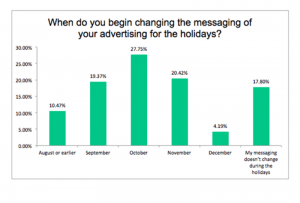Everyone has had their moments when they wondered what they were thinking—I guess I’ve just had a few more than others.
Over the course of my career, I have tried a bunch of different tactics. While a lot of them worked for me, even more have failed. We all fail, sometimes, but my failures are special. In order to help everyone else out, I want to share with you some of the dumbest, most idiotic, or perhaps “smart, but didn’t work” tactics that I have done in the SEO field.
Thankfully, these were done in the early days of my career, so no Visiture clients were a part of these failures. I do apologize for all the tools/companies I am outing, here.
Using POSI
First things first. I have nothing against POSI. However, back in the day, their tactics were not “of the whitest hat.” Their high PR links used bad content that was almost unreadable. Those are not links I would ever want to show a client.
However, they did work really well for affiliate sites. We used PR links to good guest posts that we had and created a tiered layer of links, which Google loved.
The problem? After a couple of months, Google found out and crushed whatever affiliate sites we had in 2013. It was fun while it lasted, but I would have been further ahead had I focused solely on solid links.
Using SENuke

I am literally laughing at myself as I am typing this. Yes, I used SENuke. Please forgive me and do not judge me!
I couldn’t help it. I was just starting out, and I could do SEO with basically just one click of a button. Who wouldn’t want that?
The only problem? The results worked well, back in the day, until Penguin came along—and then all of the affiliate sites fell into the abyss. The links were the worst, and then, instead of trying to disavow them, we just got new domains.
Funny story: I still see some of the links in my old company’s profile that I had when I first started out. It makes me laugh at myself.
Black Hat World Member
I used to be on the black hat side of the world, but then I opened my eyes and turned to the light side of the force … I mean, SEO.
I could see what the black hat guys were doing, and I realized it wasn’t the best practice. Instead, I tried to copy those tactics they were using but do it as a white hat guy. I’ll discuss later what a genius idea I had—emphasis on genius—with the white hat private blog networks.
Fiverr Links
The same thing happened as with SENuke: I used Fiverr links a lot, back in the day, even to use tools such as SENuke and GSA Search Engine Ranker. Maybe I was just lazy? I’m not sure, but I do know that while Fiverr gigs gave me links, they didn’t help. If they did help, it was very short-lived. My rankings would last, maybe, a couple of weeks and then fall down to page 4 or 5.
I was using Fiverr after Penguin 1.0. If I’m being honest, it was kind of fun for me. The ups and downs, of doing back hat SEO, were exciting, but, at the same time, they were very frustrating and eventually led me to the light side of the force … I mean, SEO.
Paying for Guest Posting

This one is painful to remember. I once paid $ 450 for a link to B2BMarketing.net. By the way, Grey Umbrella Marketing was my old company. I realized, after I paid the $ 450, the site had a “Write for Us” option. I thought to myself, “I just paid $ 450 for someone to find these sites and submit sub-par content to them.”
Well, once I figured that out, I ended up doing it myself and got a better link placed. This is when I started doing internal link development on my own. I have come a long way!
Not only did I lose that $ 450, but there were countless other guest posts that I paid for when I could have been doing them myself all along.
Buying Links, in General
On the same note, buying links, in general, has always been a bad idea. At Visiture, we preach to use only organic links and, since I was brought on board, we haven’t paid for a single one. I learned from my mistakes. From both an ethical and a results standpoint, it was just the way to go.
An organic link achieves 10 times the impact as a paid link does, and it isn’t dangerous. However, back in the day, we had a variety of places that would allow brand mentions and other things. This was a waste of money, and I highly recommend not doing this.
White Hat Private Blog Networks
Back to the genius idea that I mentioned earlier: Everyone was using Rankwyz for private blog networks. So, I thought, “What if I create a legit white hat WordPress blog with good content and good social media platforms? I would be able to create amazing results.”
Well, not so much. In theory, it was a great idea. In reality, it was a nightmare to manage. Plus, Google only gives you so much credit from one domain. Having multiple links from multiple domains works better, so, at the end of the day, it wasn’t as effective as I originally thought.
Creating Landing Pages with No Inner Linking
When I first started out, I read that I needed to create landing pages. So, I did just that. However, I then realized that if you don’t have links to them, Google won’t care how high your DA is or anything else about them. At some point, you need to be linking all of the pages to each other, from the navigation bar, the sidebar, or some other part of your website. At the end of the day, you need links; otherwise, Google doesn’t care.
Concentrating on Creating Content—Not Quality Content
On the same note, I would focus solely on creating content to meet the “Create Landing Page” check mark. Now, I look back at the content and grimace reading it. If you are not creating quality content that someone would want to read, why would a search engine put the content in its rankings?
Getting Site-Wide Links
This was one of my best tactics as an SEO guy before Penguin came along. I would build WordPress sites for local businesses, for almost free, and manage them so I could put links in the footer back to my site. It worked well, and you can see that all the local website designer agencies do it. Back in 2012-2013, everyone on the first or second page had about 300,000 backlinks, at least. It was incredible. So, when I saw that, I realized I should do it, too.
But, eventually, Penguin put an end to it.
Using Cheap or Bad Workers
I used to think that it was ridiculous to charge $ 100+ an hour for anything—and then my business became a “legit” business, and my eyes were opened to a whole new world. I realized I could get much more value if I paid people more and charged more. It was a beautiful thing, seeing it come to fruition. My big mistake was hiring cheap or bad workers just because they were cheap. It definitely cost me in the long run.
Conclusion
I hope you have enjoyed reading about my biggest SEO failures, and I hope you do not make the same mistakes I made back in the day. This was fun, reliving these major errors (sort of!), and I hope I have helped some of you avoid them in your future SEO endeavors.
Digital & Social Articles on Business 2 Community(95)
Report Post





